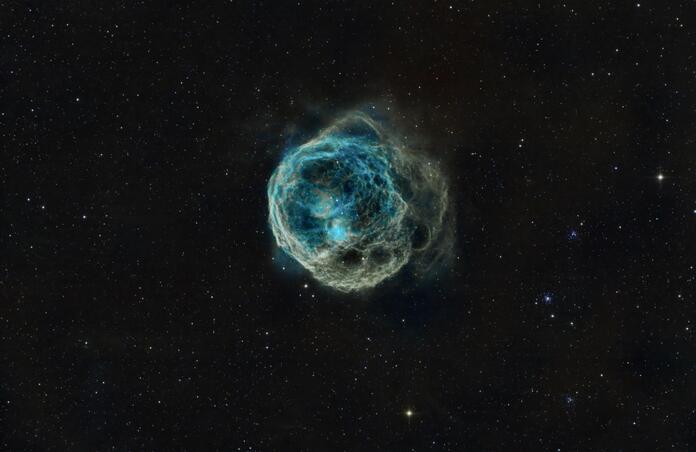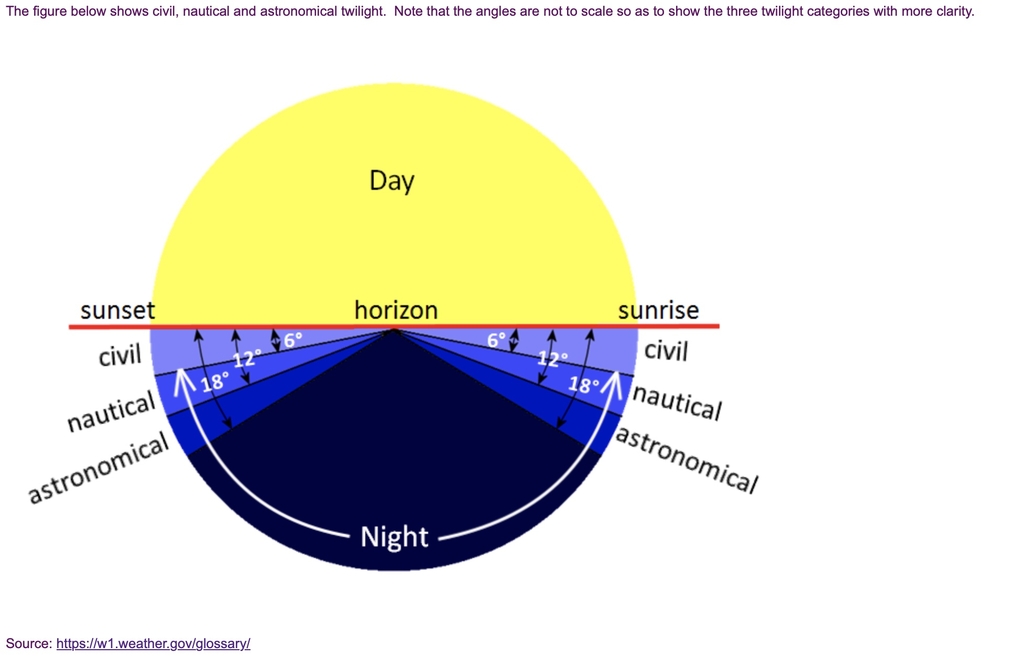The 3 Types of Twilight

When I first started as an observer, I learned there were different stages of twilight that happened as we waited patiently for the sky to get dark. A friend of mine recently asked me what astronomical twilight was and while answering, I thought this might be a good subject to review for others who may not be familiar with the different stages of twilight. Here is a quick primer on the subject; as reference, you can find this information on the U.S. National Weather Service website here.
There are 3 stages of twilight.
Civil Twilight: In the evening, this period starts at sunset and ends when the geometric center of our star is 6 degrees below the horizon. During this time, it’s possible to view bright stars, the larger planets such as Jupiter, Saturn, Mars and Venus and still see the horizon and larger terrestrial objects.
Nautical Twilight: In the evening, this period is between the time when our star is between 6 degrees and 12 degrees below the horizon. The term Nautical Twilight refers “to sailors being able to take reliable readings via well known stars because the horizon is still visible”. Note: this is usually when I begin to power up my equipment and begin the thermoelectric cooling on my camera and basic equipment checks such as completing / checking the mount polar alignment.
Astronomical Twilight: In the evening, when our star is 18 degrees below the horizon. This is when the sky is considered fully dark - in this case, the horizon is not discernible and moderately faint stars can be seen with the naked eye.
The chart below provides a visual aid for each stage. Again, this information is from the U.S. National Weather Service website.

Clear skies...
Astro Image Credits:
Henize 70 (https://app.telescope.live/click-grab/all?target=henize 70); Telescope Live 1-Click Observation Data, Processed using PixInsight by Reggie Jones
References:
U.S. National Weather Service; https://www.weather.gov/lmk/twilight-types#:~:text=Astronomical Twilight:,urban or suburban light pollution.
